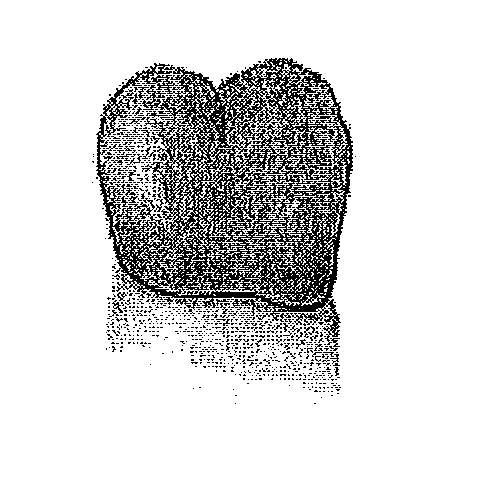Method of making dental prosthesis and ductile alloys for use therein
a technology of dental prosthesis and alloy, which is applied in the field of dental prosthesis manufacturing, can solve problems such as parts fracture, and achieve the effect of preventing cracking
- Summary
- Abstract
- Description
- Claims
- Application Information
AI Technical Summary
Benefits of technology
Problems solved by technology
Method used
Image
Examples
Embodiment Construction
[0014]One approach to address the absorption of the stresses is to utilize ductile alloys. Such ductile alloys are described in prior art by German Patent No. 1104195 to Obrowski. We have determined the ranges described by Obrowski (29-45 wt % cobalt, 20-50 wt % ruthenium, and 20-40 wt % chromium) are broad enough to accommodate altering the thermal expansion of the alloy in order to be compatible with different dental porcelains. It is important that the coefficients of thermal expansion of the alloy and the dental porcelain closely match to prevent cracking of the porcelain during processing which takes place at about 900° C. Currently, dental porcelains have a coefficient of thermal expansion of between about 12-14 (10−6 / K at 600° C.).
[0015]The alloy used in the present invention for the manufacture of dental prosthesis is preferably in % by weight: 30-40% Co, 25-40% Ru, 20-40% Cr, and 0-0.1% Ni. The alloy contains a minimum of 25% Ru and platinum group elements, including Pt, Rh...
PUM
| Property | Measurement | Unit |
|---|---|---|
| Temperature | aaaaa | aaaaa |
| Fraction | aaaaa | aaaaa |
| Fraction | aaaaa | aaaaa |
Abstract
Description
Claims
Application Information
 Login to View More
Login to View More - R&D
- Intellectual Property
- Life Sciences
- Materials
- Tech Scout
- Unparalleled Data Quality
- Higher Quality Content
- 60% Fewer Hallucinations
Browse by: Latest US Patents, China's latest patents, Technical Efficacy Thesaurus, Application Domain, Technology Topic, Popular Technical Reports.
© 2025 PatSnap. All rights reserved.Legal|Privacy policy|Modern Slavery Act Transparency Statement|Sitemap|About US| Contact US: help@patsnap.com


